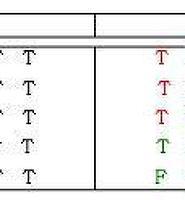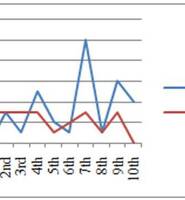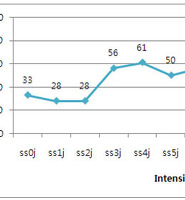Helianthus
[감각및지각심리학] motion perception and schizophrenic 본문

Answering to a certain question like ‘why~’ is a very fascinating work because it makes me be able to go further and integrate my thoughts. Last year I took a course, ‘abnormal psychology’ and studied many psychological and clinical symptoms and disorders. But I felt that something about the contents is insufficient and that was the explaining or answering to why for clinical disorders not just describing. Of course there were some explanations with biology or neurology, but there wasn’t any sufficient scientific evidence about patients’ perceptive or cognitive problems only to describe like ‘Schizophrenia patients usually have hallucinations and attention problems as their positive symptoms.’ And that’s all. So what I was told on Tuesday, 6/8 were suited to me because I could get much information explaining schizophrenia patient’s perceptive problems; ‘Why schizophrenia patients have hallucination?’
Simply understanding the hallucination as a distortion of perception is not helpful for patients to treat their symptoms. So we need to study about what factors are critical to patient’s distorted perception and I can get the answer from the two articles.
Firstly schizophrenia patients did well on detection of a grouped figure against the background noise, which is related to good continuation but showed deficits on recognition of human activity portrayed in point–light animations(biological motion task (Kim et al. 2005)*. It means that their visual seeing and grouping without motion related information are intact. They see exactly same physical visual fields as we do when fields are static, but the real world provides many kinds of dynamic stimuli, which overload the patient’s global motion-grouping perception.
Then, how about the local motion perception which was briefly mentioned in this article? In the lecture and the above article I could compare the two conditions; static-global form (distinguishing continuation from noise fragments) vs. dynamic-global form (distinguishing biological motion from scrambled motion), but I wondered the specific experiments that studied certainty of deficiency on the local motion perception for the patients. In this article, local motion perception is intact in the schizophrenia patients, citing Chen et al.’s study**. So I read the Chen’s study for the second article.
Chen et al. utilized the experiments that compare the task detecting the direction of coherent motion for global motion to the other task detecting the movement direction of gratings for local motion. The result is that the patients show impairment on the former and intactness on the latter.
From the two articles I can get an insight about the hallucination and the attention problem from which the schizophrenia patients suffer.
Although they are exposed to the same stimuli which is dynamic as the real world is, they organize the stimuli into different ways or have difficult to organize so percept differently. Of course it needs to get more evidences from further research but neurological aspects that the integrating or global perception is the matter are supported with many studies; especially biological motion, STS is considered. So they have a distorted perception.
In addition, a report, which the schizophrenia patient says, “I cannot give attention to visual and auditory sense at the same time like the time I watch TV” can be considered as following; Patients can percept local figures but have difficulties on integrating, organizing, and interpreting that figures as a global. Then we can think local figures as each vision, auditory sense and integrating, interpreting to global as an appropriate attention or perception binding.
I think perceptive and Cognitive explanation on the clinical disorders, when it is related, can give prediction and insight about those disorders as well as investigate and reveal the ‘why question’. So I hope the textbook of clinical or abnormal psychology would include such studies for more integrated view.
References
* Kim J, Doop ML, Blake R, Park S. 2005. Impaired visual recognition of biological motion in schizophrenia. Schizophr. Res. 77:299–307.
** Chen, Y., Nakayama, K., Levy, D., Matthysse, S., Holzmann, P., 2003a. Processing of global, but not local, motion perception is deficient in schizophrenia. Schizophrenia Research 61, 215– 227.
*** figure resource (at the top) : http://www.jvrb.org/5.2008/1419/figure07.jpg
'심리학' 카테고리의 다른 글
| [행동신경과학 및 실습] 동물 행동실험을 가상적으로 설계해보자. (0) | 2010.06.22 |
|---|---|
| [브랜드심리학] 월드컵 특수 광고에 대하여 논해보자. (0) | 2010.06.22 |
| [감각및지각심리학] Monocular perception (0) | 2010.05.25 |
| [감각및지각심리학] The maximum limit amount of soy sauce to fool your friend ‘secretly’ (0) | 2010.04.16 |
| [감각및지각심리학] “I decide to give up my eyes.” (0) | 2010.03.18 |
Comments




